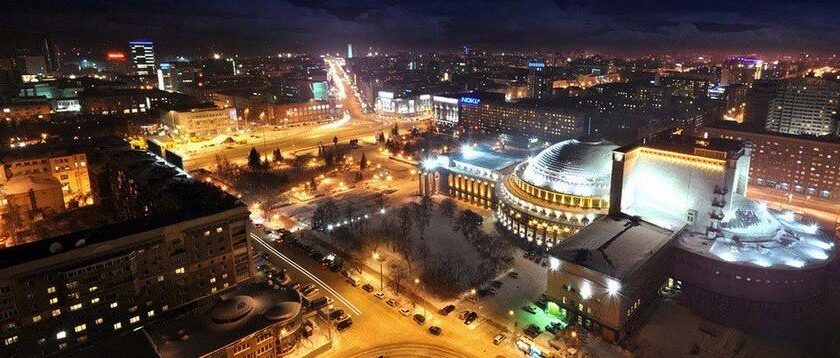Novosibirsk State Academic Opera and Ballet Theater (NGATOiB)
The Novosibirsk Opera and Ballet Theater is one of the most famous stages in the country. Its troupe belongs to the elite of Russian culture. The building of the theater, which is often called the Siberian Coliseum, is famous for being the largest and most unusual theater building in Russia. In terms of technical equipment, the main Novosibirsk temple of culture surpasses the renowned Bolshoi and Mariinsky theaters. Its repertoire includes 26 opera productions, 23 ballet performances and 29 concert programs. As a rule, all performances are accompanied by full houses.
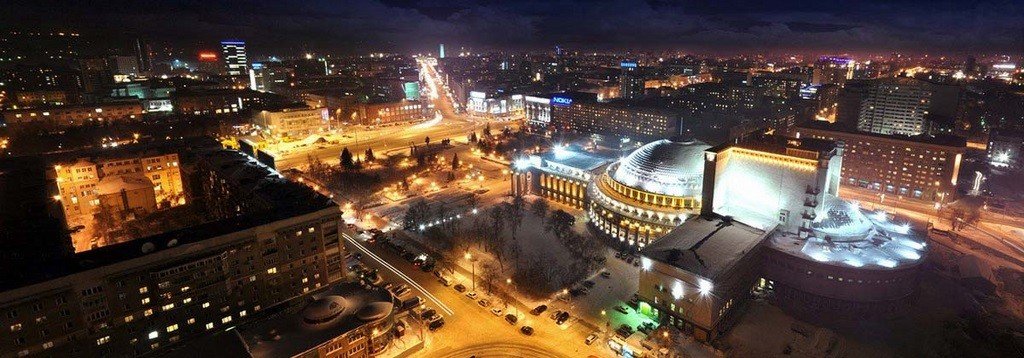
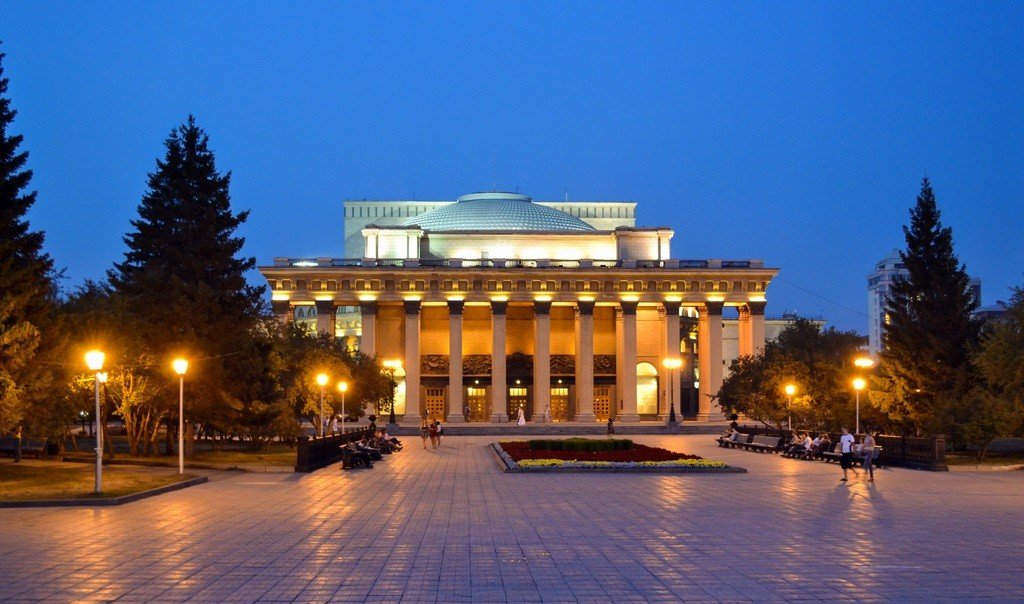
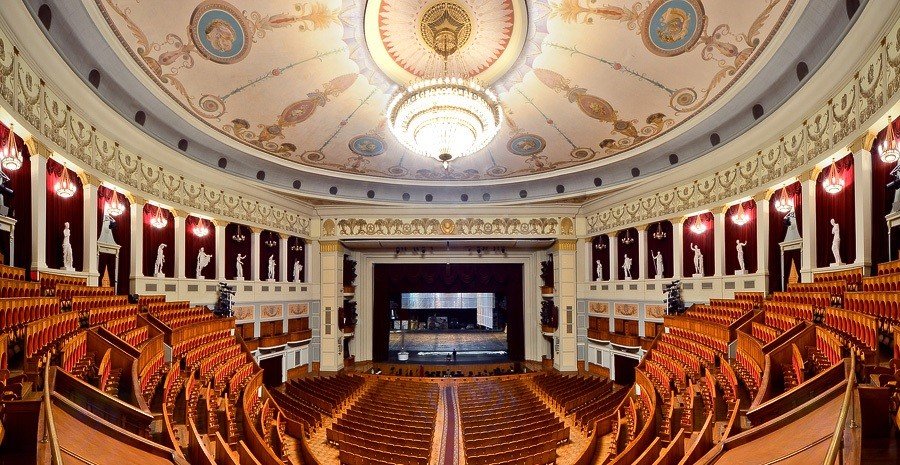
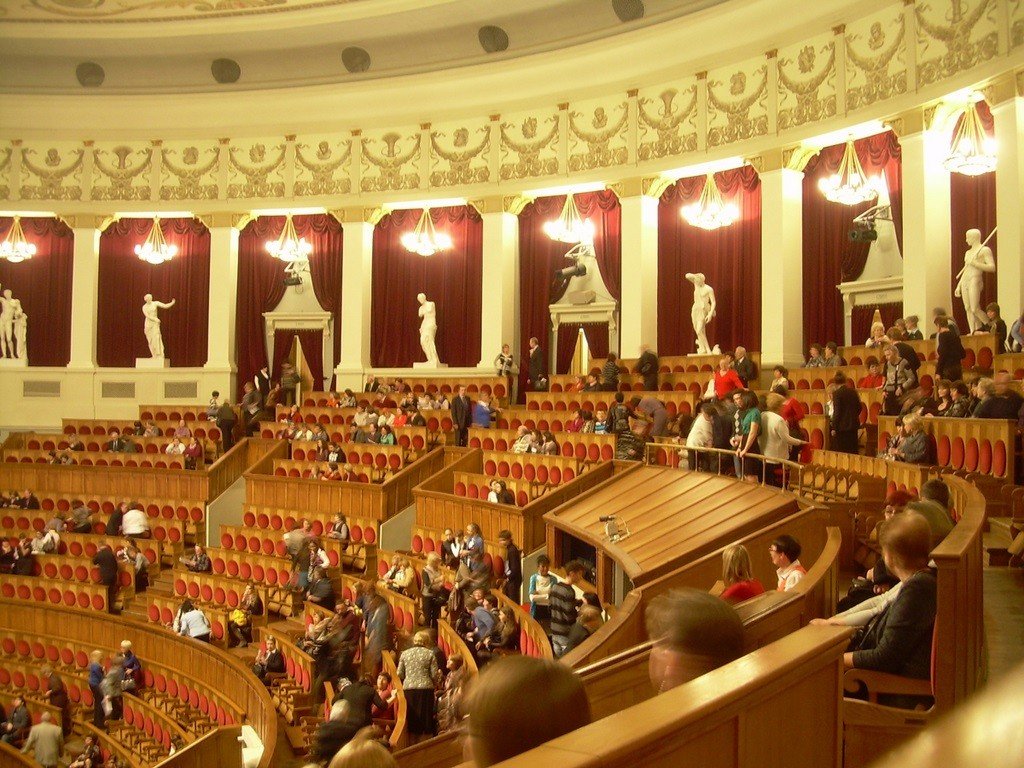
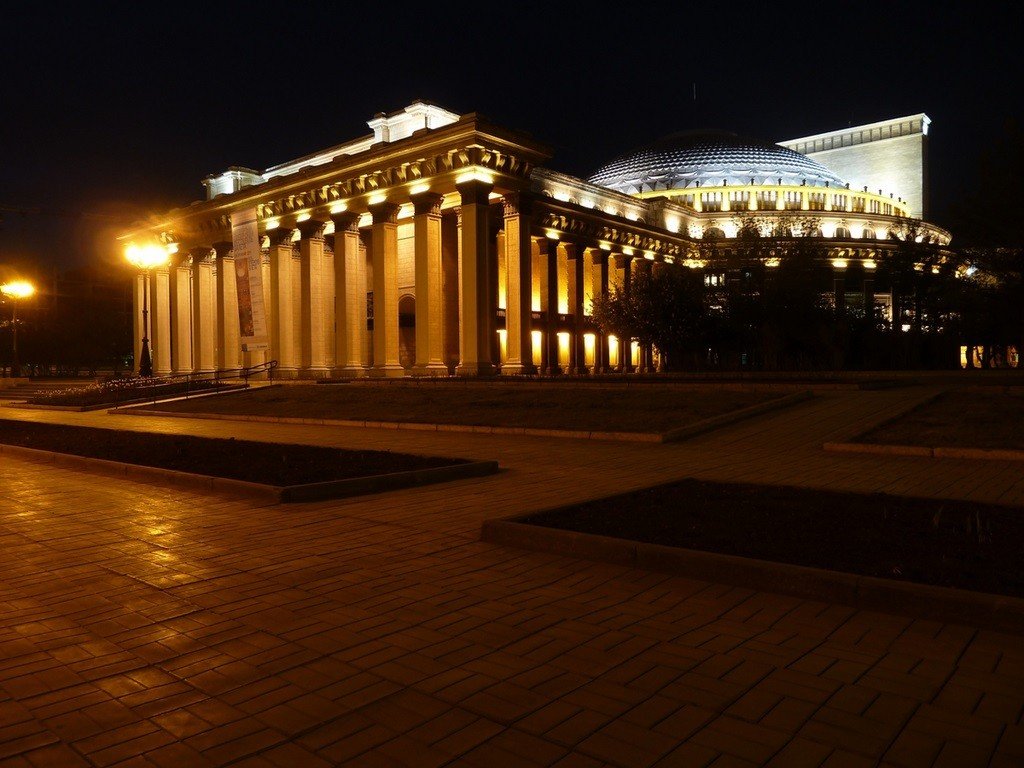
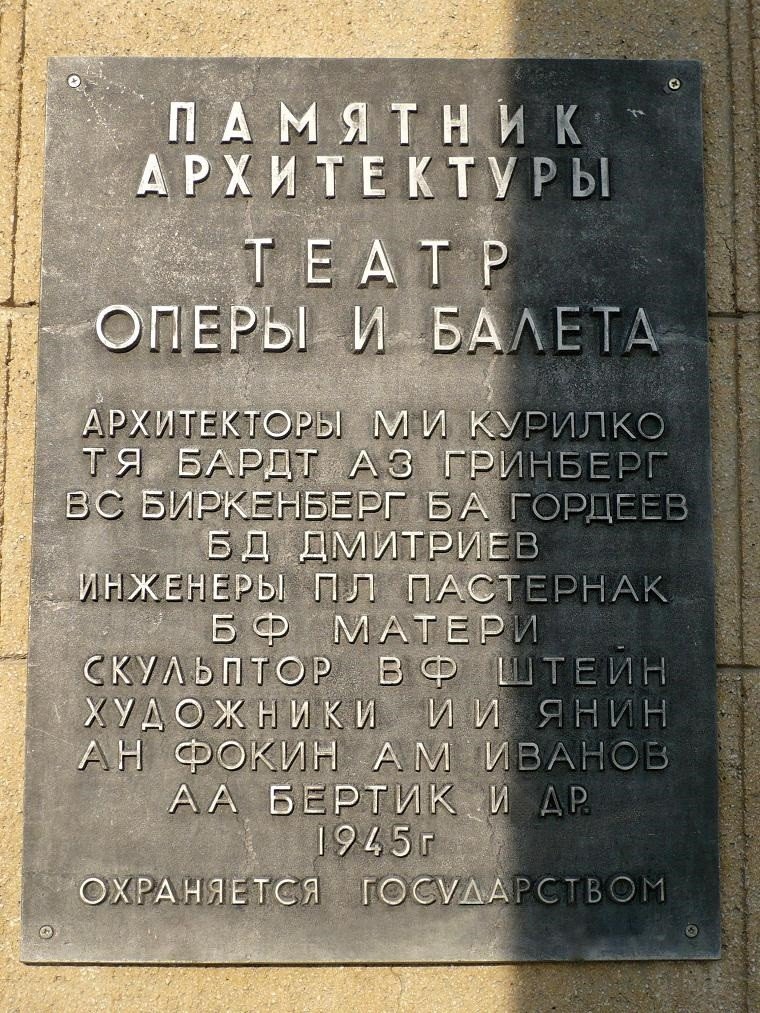
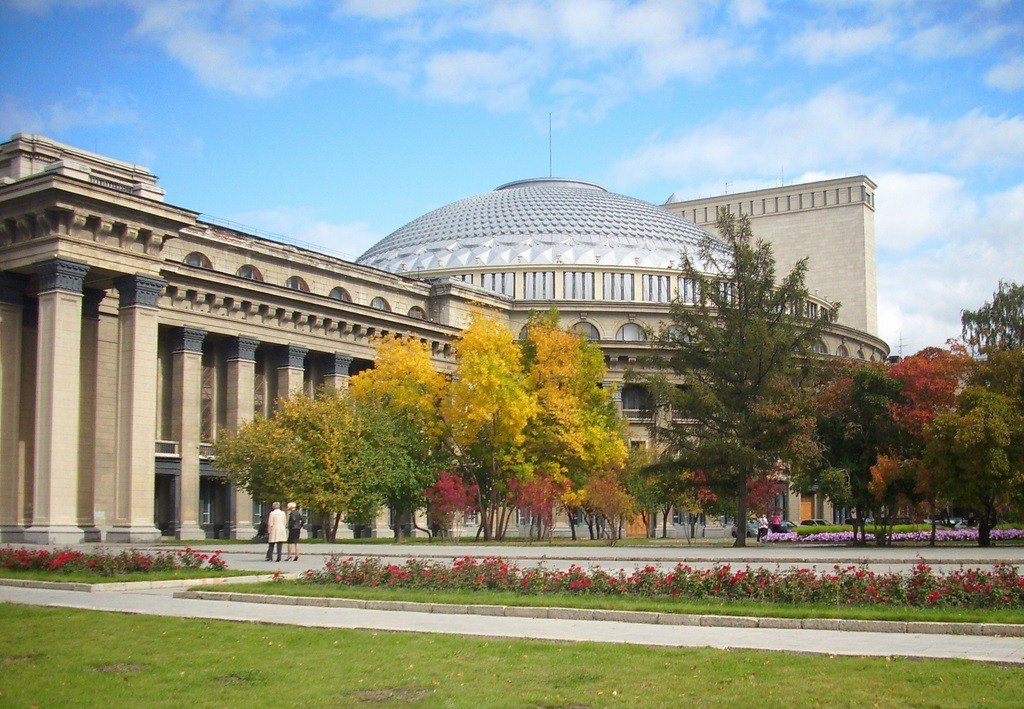
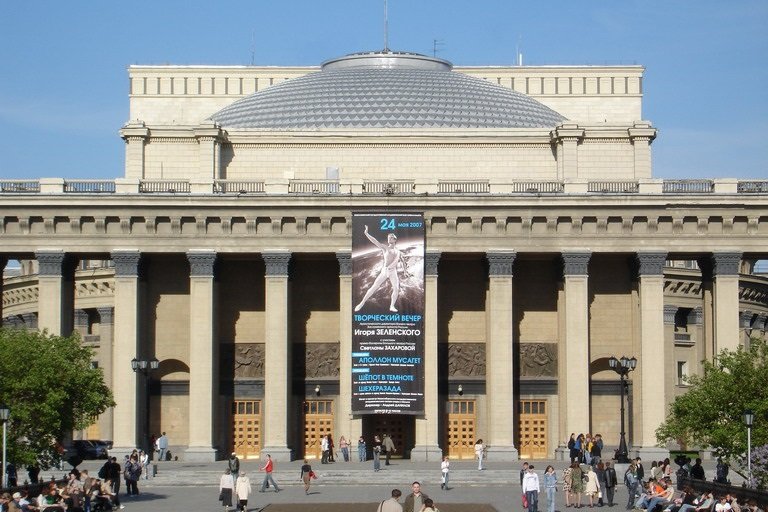
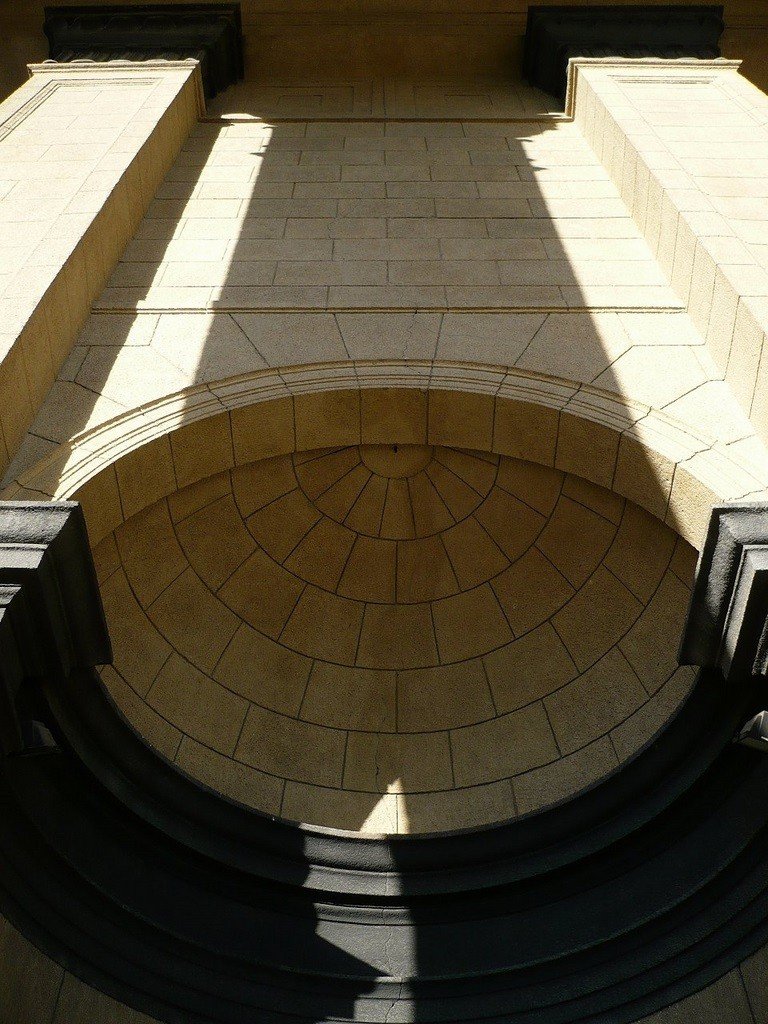
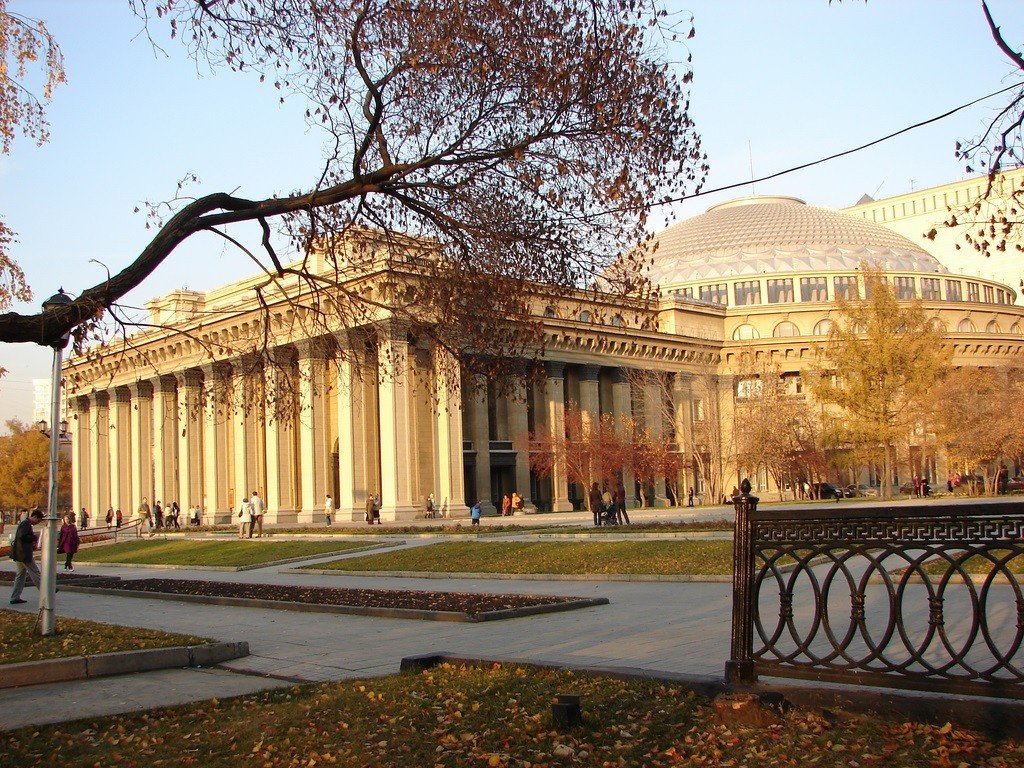
Video: Opera and Ballet Theater in Novosibirsk
Contents- Highlights
- History of the Novosibirsk Theater
- Opera and Ballet Theater today
- Practical information
- How to get there
Highlights
The grandiose building of the Opera and Ballet Theater in Novosibirsk is a unique structure of historical and cultural value. Constructivist architecture of the structure bears the imprint of the most daring, non-standard ideas of engineers and architects who worked on its project in the first half of the last century.
.
The theater impresses with its monumental forms, spacious functional interiors, original details of design, and its technical characteristics are amazing. The building covers an area of 11,500 m² with a total cubic volume of 216,000 m³. The working area of the stage covers 1,044 m² and can accommodate up to a thousand performers.
.
The main auditorium has a seating capacity of 1,762. Its luxurious scenery hosts the main performances – reference classical opera and ballet productions, avant-garde productions. You can also see premieres here..Children’s performances are staged mainly on the small stage – in the concert hall with 321 seats. On the upper level of the building is the rehearsal hall, which can accommodate 130 spectators. All three stages of the Novosibirsk Opera and Ballet Theater regularly host gala concerts of the company’s soloists, experimental ballet performances, and evenings of Russian romance.
.History of the Novosibirsk Theater
On the creation of a temple of Melpomene in Novosibirsk, which would challenge the bourgeois theater, began in the 20-ies of the last century. Then the builders of the “new world” head dizzy large-scale phantasmagoric ideas, and to their realization approached with unprecedented enthusiasm. By 1929, global plans materialized in a project called “House of Culture and Science”. It was supposed to build a complex of buildings united by a single architectural concept. It was to include the theater itself, as well as a research institute with laboratories, Museum of productive forces of the Siberian region.
.
The architects enthusiastically undertook to realize the theatrical utopia, creating on sheets of absorbent cotton drawings of colossal volumes, incredible structures, because the DKiN was conceived as a synthesis of art, science and technology, acting and mass civil manifestations. Unconventional ideas about the modernist temple of culture were most clearly reflected in the project of Moscow architects Alexander Grinberg, Traugott Bardt and Mikhail Kurilko, the Bolshoi Theater’s chief artist. The patented concept of a “super-mechanized synthetic theater of planetary-panoramic type” was astonishing.
.
If necessary, the moving stage was to be transformed into a roadway of a city street or a circus arena, the auditorium for 2600 seats – into a square for festive processions, backstage – into an art gallery. It was supposed to bring ramps to the stage so that a truck with banners or even an armored tank could drive onto it. In addition, a science and technology exhibition was planned, a swimming pool could be arranged in the parterre, and the dome was supposed to be used as a spherical screen to show movies.
.
Such incredible metamorphoses required bold engineering solutions, powerful mechanisms. But most revolutionary ideas were destined to remain on paper. Existing at that time, industrial enterprises did not have the ability to create such fantastic machines, and the cost of erecting the theater many times exceeded the allowable budget.
.
By 1935, the building was still standing in scaffolding. That’s when they decided to return to the concept of a traditional opera house. The architectural design underwent a critical revision. Already erected structures that did not correspond to the simplified version of the structure were demolished. The construction managers were accused of failing to meet the deadline for commissioning the theater, were declared enemies of the people and repressed.
.
By the beginning of the Great Patriotic War, the building of the Novosibirsk Opera and Ballet Theater was almost completed. The completion of the work fell just on the war years. During the same period, works of art taken from the Hermitage, Tretyakov Gallery, Pushkin and other museums in Moscow and Leningrad were kept here. Paintings by Rembrandt, Botticelli, Rubens, Russian masters, a collection of Stradivarius violins for a while turned the Trans-Ural new building into the richest collection of world masterpieces. It was then that rumors began to circulate that the Amber Room had also been moved to Novosibirsk.
.
One of the legends claims that a whole secret city is hidden under the theater building. Allegedly from here Stalin was supposed to lead the state in case of occupation of Moscow by the Germans. According to actor Zinovy Gerdt, who was treated in a Novosibirsk hospital after being wounded in action, the front-line soldiers in the infirmary often argued about whether the grandiose structure was a “reserve Kremlin” or a secret gun complex from which they planned to shoot directly at Berlin. In fact, once there was a boiler house under the theater, to which was connected a narrow gauge railway for coal cars. It is also true that under the building there are two artificial lakes with a capacity of 6000 thousand cubic meters each. They were created in case of fire.
.The Novosibirsk Opera and Ballet Theater opened 3 days after the fall of Berlin – May 12, 1945. The first work performed within its walls was Mikhail Glinka’s opera “Ivan Susanin”. In 1955 Novosibirsk artists performed on the stage of the Bolshoi Theater, and two years later they first went on tour abroad – to China. In the 60-70s the theater gained wide popularity in the USSR, and since the 90s began to conquer the international cultural space. In 2008, a production of Verdi’s opera Macbeth – a joint project of the Novosibirsk Theater and the Paris Grand Opera – received worldwide resonance.
.
In 2015, experts included in the list of potential nominees for the Golden Mask Award the production of “Tannhäuser” staged on the main stage of Novosibirsk by the young director Timofey Kulyabin. His interpretation of Verdi’s opera provoked the anger of churchmen and a loud scandal in the domestic theater world, leading to lawsuits and thousands of rallies in support of artistic freedom.
.Opera and Ballet Theater Today
The Novosibirsk Opera and Ballet Theater did not undergo systematic restoration work until the beginning of our century. They began them in 2001, and completed a large-scale repair in 2005, when the audience was greeted by an updated theater with the most modern equipment. At the same time, specialists steadfastly observed the criteria of preserving authenticity or, at the very least, authenticity, given the avant-garde concept of the external appearance of the building and its interiors.
.
In 2015, restoration began again in the theater, which was not appreciated by everyone. A number of architects and the public were outraged by the neoclassical elements introduced, the flamboyant luxury in the exterior and interior design of the theater, which camouflaged its constructivist features.
.
Authentic muted interior colors have now given way to terracotta and burgundy, mosaic and oak floors on the first and second floors have been carpeted, the circular foyer has lost its wooden wall panels and doors. Authentic interiors were also changed by the abundance of gilding and mirrors. The creators of the new style are convinced that it brings festivity, solemnity, gloss to the theater atmosphere, and their critics sarcastically declare that the theater now looks like a “middle-class Turkish hotel.”
However, no innovations have changed the grandiosity of the original project. Before the performance, you can take a walk in the public garden and look around the famous avant-garde building. The huge portal is made up of 24 square columns placed in two rows. These pillars support the carved frieze that girdles the exterior facades. The rectangular vestibule is attached to the round main volume, topped with a dome. The outer vault is surrounded by a graceful circular colonnade..The facade of the Novosibirsk Opera and Ballet Theater is rhythmically dissected by semi-columns, elegant cornices, deep niches of window openings. The appearance of the building is completed by a narrow high extension to the rear facade, where the mechanisms for controlling the change of stage scenery are located. The blank terracotta wall of this element serves as a visual background for the dome, contrasting with its silver hemisphere. By the way, the dome with a diameter of 60 meters has not lost its authentic appearance after the reconstruction. It is hard to believe that the thickness of the shell of the colossal spherical vault does not exceed the width of the palm of your hand. To visualize the ratio of these figures, one can imagine a hen’s egg with a shell three times thinner than the usual one. The metal coating of the dome is covered with thousands of decorative silver pyramidal scales.
.Guests are welcomed by a spacious lobby with a box office and a checkroom. Costumes used in various theatrical productions are also displayed here. The grand circular foyer surrounding the auditorium impresses with its scale, reminding of the global nature of the project’s authors’ intentions. The luxurious main auditorium is flanked by a colonnade. In its niches, trimmed with velvet, 16 copies of famous antique sculptures are installed. The huge ceiling plafond is skillfully decorated with paintings, and in its center is a stunning crystal chandelier. Its diameter is almost 6 meters and its weight is about two tons.
.The technical equipment of the Novosibirsk Opera and Ballet Theater is considered the best in Russia. It has excellent acoustics, which is achieved in various ways. The orchestra pit, for example, can easily descend to the depth necessary for optimal sound capacity or rise to the level of the stage scaffolding. The side curtains are equipped with acoustic curtains that accumulate and enrich the sound directed into the auditorium.
.Practical information
The box office of the Novosibirsk Opera and Ballet Theater is open daily from 10:00 to 21:00. The price of tickets varies between 500-3000 rubles. It is possible to purchase a season ticket, which will save more than 30% of the ticket price. In this case, as a bonus, a tour of the building is offered. Types of subscriptions are different. Detailed information can be found on the website of the theater. Here it is also convenient to form your own subscription, indicating the performances you would like to see.
.
The theater has developed a convenient system of discounts for students, pensioners. True, it applies only to repertoire productions. As a rule, here give about 40 performances a month.
.
In the theater foyer work spectator bar, buffet. In the assortment – sandwiches with sausage and caviar, ice cream, cakes, desserts, as well as champagne, whiskey. Bank cards are accepted for payment. You can sit on soft sofas or in armchairs.
.How to get there
The Novosibirsk Opera and Ballet Theater is located at 36 Krasny Prospekt. A few meters from it is the metro station “Ploshchad Lenina”. To the stop of public transportation, bearing the same name, buses number 5, 13, 18, 28, 41, 97, 98, as well as trolleybuses number 5, 10, 13, 36 arrive.
.
There are also two stops of streetcar No. 13 near the theater: “Opera and Ballet Theater” and “Deputatskaya Street.”
.The Novosibirsk theater has a parking lot. Here you can leave your car by showing the security guard a ticket for the performance. Entrance to the parking lot is from the side of Deputatskaya Street.
.